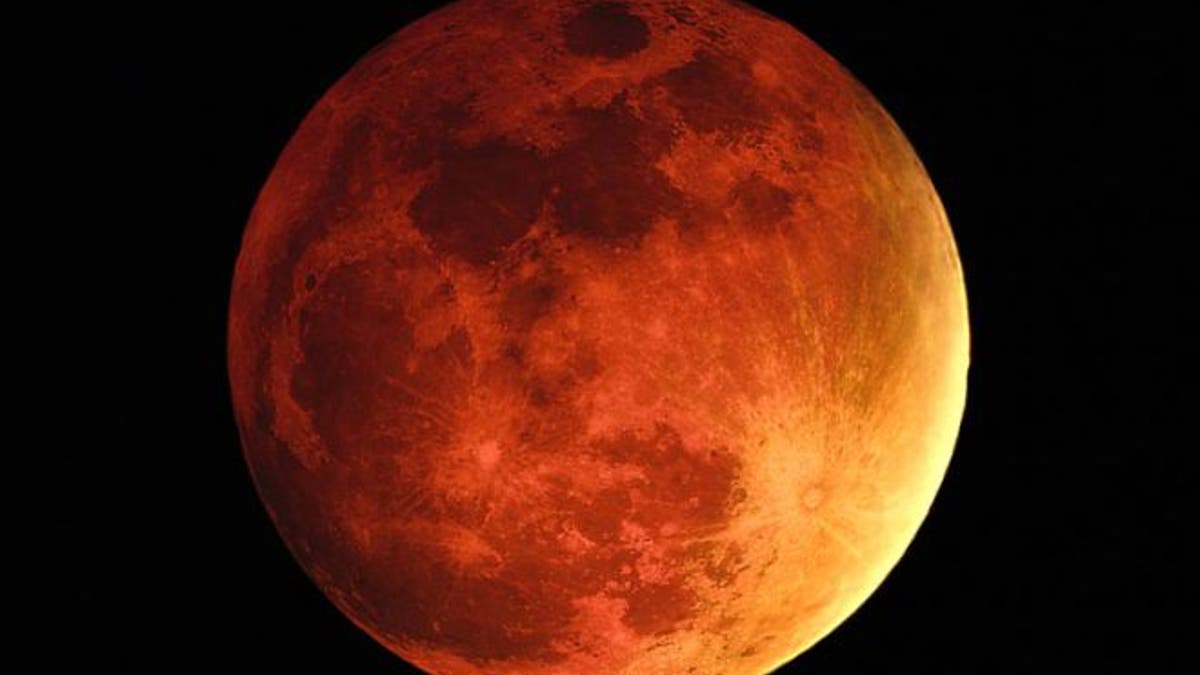
(Image via NASA)
Events in the Middle East today focus the world’s attention on Israel and the nations that surround it. But should we turn our eyes toward the sky instead? An extremely rare celestial alignment taking place now argues that we should.
I have long believed the heavens are God’s “billboard,” that naturally-occurring celestial events can be heralds of God’s work in the world. One example in 2014 and 2015, is the occurrence of four “blood moons”—an event known as a tetrad.
What is a blood moon? A lunar eclipse occurs when the earth passes between the sun and the moon. In a blood moon, the moon is full, and as the sun’s light passes through the earth’s atmosphere, it casts a reddened shadow on the moon. Full lunar eclipses are rare, and blood moons even more so, but neither is unheard of. So what’s so special about this tetrad?
Each of these four blood moons occurring in a two-year period also coincides with major holy days on the Jewish calendar. In April of last year, a blood moon occurred at Passover. In October, the Feast of Tabernacles, known as Sukkot, also fell on a blood moon. In 2015, blood moons again accompany each of those holy days.
Now we are talking about a rare occurrence. In fact, a tetrad occurring on Jewish holy days has only happened three times in the past 500 plus years. And one more thing; in this tetrad, a solar eclipse also will take place. That compilation of events—four blood moons, Jewish holy days, solar eclipse—will never occur again.
In my mind, when something so rare takes place—particularly at a time of world tension such as we see now—it’s fair to ask if there is significance here. As a pastor and a student of scripture, this tetrad sparked my interest. In the book of Joel (2:30-31) it says, ‘I will show wonders in the heavens above and signs in the earth beneath. The sun shall be turned into darkness and the moon into blood . . .’ those exact words are repeated in the book of Acts (2:20) spoken by Peter as he quotes the prophet Joel.
So I tapped experts from other arenas and documented it on film, along with some of the historic happenings during other tetrads. A few examples of these authorities include Dennis Prager, Dinesh D'Souza, and well-known and respected Rabbi Schlomo Riskin, who speaks of the importance of lunar and solar eclipses for the Jewish people and the world.
Whether you are inclined toward scripture or not, we all share the history of life on our planet. If we look at events surrounding the three previous tetrads, it certainly raises questions.
Each time a tetrad occurred, it was near a time of major events in the life of the Jewish people and the world. Let’s look:
■ 1493 – Spain’s rulers had expelled all Jews from that country, and Columbus had discovered America, which became an eventual haven for the Jewish people.
■ 1948-49 – Following World War II came the rebirth of the nation of Israel.
■ 1967-68 – In the wake of the Six-Day War, Jerusalem is reunited with the state of Israel.
And now, we have a tetrad happening again—the moon turned to “blood.” This tetrad will have a solar eclipse—the sun “darkened” at the center of it —an occurrence that will not happen again in this century. You needn’t share my scriptural view to look at the past, to look at the present . . . and to wonder what the future might hold.
On March 23, for one night only in theaters nationwide, we’ll explore this historical, scriptural and astronomical phenomenon with experts who bring great insights. To find a theater near you, click here.
